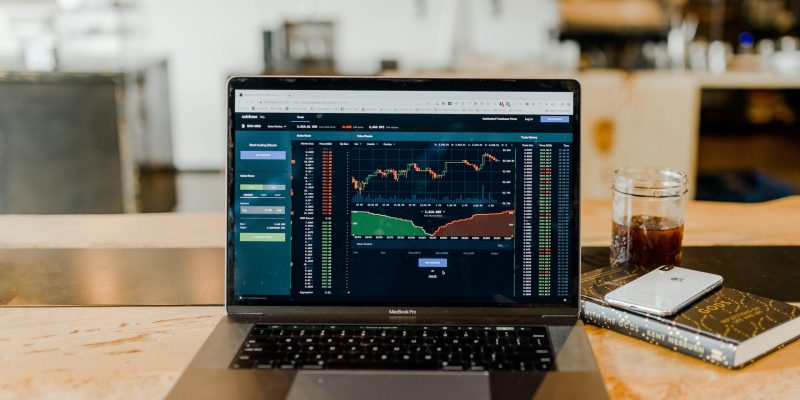Introduction:
Cryptocurrency exchanges have become popular platforms for trading digital assets. As the popularity of cryptocurrencies grows, so does the importance of robust security measures on these exchanges. In this article, we will explore the security measures implemented by various cryptocurrency exchanges to safeguard user funds and protect against cyber threats. It is also relevant to take note of the main issues with the Internet Computer, which is used to be utilized in running cryptocurrency, smart contracts, and decentralized applications.
I. Secure Infrastructure and Data Encryption
Cryptocurrency exchanges prioritize the security of their infrastructure to protect user data and funds. They employ advanced encryption protocols, such as Transport Layer Security (TLS), to secure data transmission between users and the exchange’s servers. This encryption ensures that sensitive information, such as login credentials and financial details, remains encrypted and unreadable to unauthorized parties.
II. Two-Factor Authentication (2FA)
To add an extra layer of security, cryptocurrency exchanges often implement two-factor authentication (2FA). This method requires users to provide two pieces of evidence to verify their identity, typically combining something they know (e.g., a password) with something they have (e.g., a unique verification code generated by a mobile app). By enabling 2FA, users are better protected against unauthorized access to their accounts, even if their passwords are compromised.
III. Cold Storage for Digital Assets
Many cryptocurrency exchanges utilize cold storage solutions to secure users’ digital assets. Cold storage refers to offline storage systems that are not connected to the internet. By keeping the majority of funds in cold storage, exchanges mitigate the risk of theft through hacking attempts or security breaches. Hot wallets, on the other hand, are used for immediate liquidity needs, holding only a smaller portion of the assets necessary for daily transactions.
IV. Regular Security Audits and Penetration Testing
To ensure the integrity of their security measures, reputable cryptocurrency exchanges often subject their systems to regular security audits and penetration testing. Independent security firms are hired to assess the exchange’s infrastructure, identify vulnerabilities, and propose enhancements. By conducting these audits, exchanges can proactively address potential weaknesses and stay one step ahead of malicious actors.
V. Multi-Signature Wallets
Multi-signature wallets are another security feature implemented by cryptocurrency exchanges. This technology requires multiple signatures to authorize transactions, providing an additional layer of protection against unauthorized transfers. For instance, a multi-signature wallet may require two out of three authorized parties to sign off on a transaction before it can be executed. This mechanism adds an extra safeguard against single points of failure and unauthorized access.
VI. Real-Time Monitoring and Suspicious Activity Detection
Cryptocurrency exchanges employ sophisticated monitoring systems to detect and prevent suspicious activity. These systems use advanced algorithms and machine learning techniques to analyze user behavior, transaction patterns, and other indicators of potential fraudulent or malicious activity. By monitoring the platform in real-time, exchanges can quickly identify and respond to security threats, protecting both their users and the integrity of the exchange itself.
VII. Insurance Coverage
In recent years, some cryptocurrency exchanges have started offering insurance coverage to provide an additional layer of protection for user funds. This insurance typically covers losses resulting from theft or hacking incidents, offering users peace of mind knowing that their investments are safeguarded. The availability of insurance coverage varies among exchanges, and users should review the terms and conditions to understand the extent of the coverage provided.
Conclusion:
As the cryptocurrency market continues to evolve, security remains a top concern for both users and exchanges. To ensure the safety of users’ funds and data, exchanges implement various security measures, including secure infrastructure, 2FA, cold storage, regular security audits, multi-signature wallets, real-time monitoring, and insurance coverage. It is essential to exercise caution and due diligence when choosing a cryptocurrency exchange. Users should prioritize platforms that demonstrate a strong commitment to security and employ multiple layers of protection.
Additionally, users can take certain precautions to enhance their security while using cryptocurrency exchanges. It is important to use strong, unique passwords and regularly update them. Users should also enable 2FA whenever possible and avoid sharing sensitive information or credentials with anyone. It is advisable to keep software and devices up to date with the latest security patches and use reputable antivirus software.
Furthermore, users should be vigilant against phishing attempts and suspicious links. Hackers often employ social engineering techniques to trick users into revealing their login credentials or installing malicious software. Verifying the authenticity of emails, links, and communications is crucial to prevent falling victim to such scams.
In conclusion, while cryptocurrency exchanges have implemented robust security measures, users need to play an active role in protecting their funds and personal information. By combining the security measures implemented by exchanges with individual precautions, users can minimize the risks associated with trading cryptocurrencies and enjoy a safer trading experience.
DISCLAIMER: This article is a partnered post and does not substitute for professional advice or help. Any action you take upon the information presented in this article is strictly at your own risk and responsibility.
Feature Photo by Austin Distel on Unsplash






[…] Source link […]